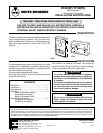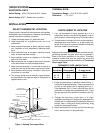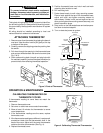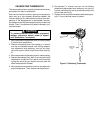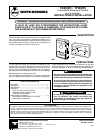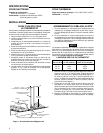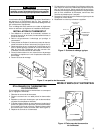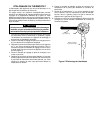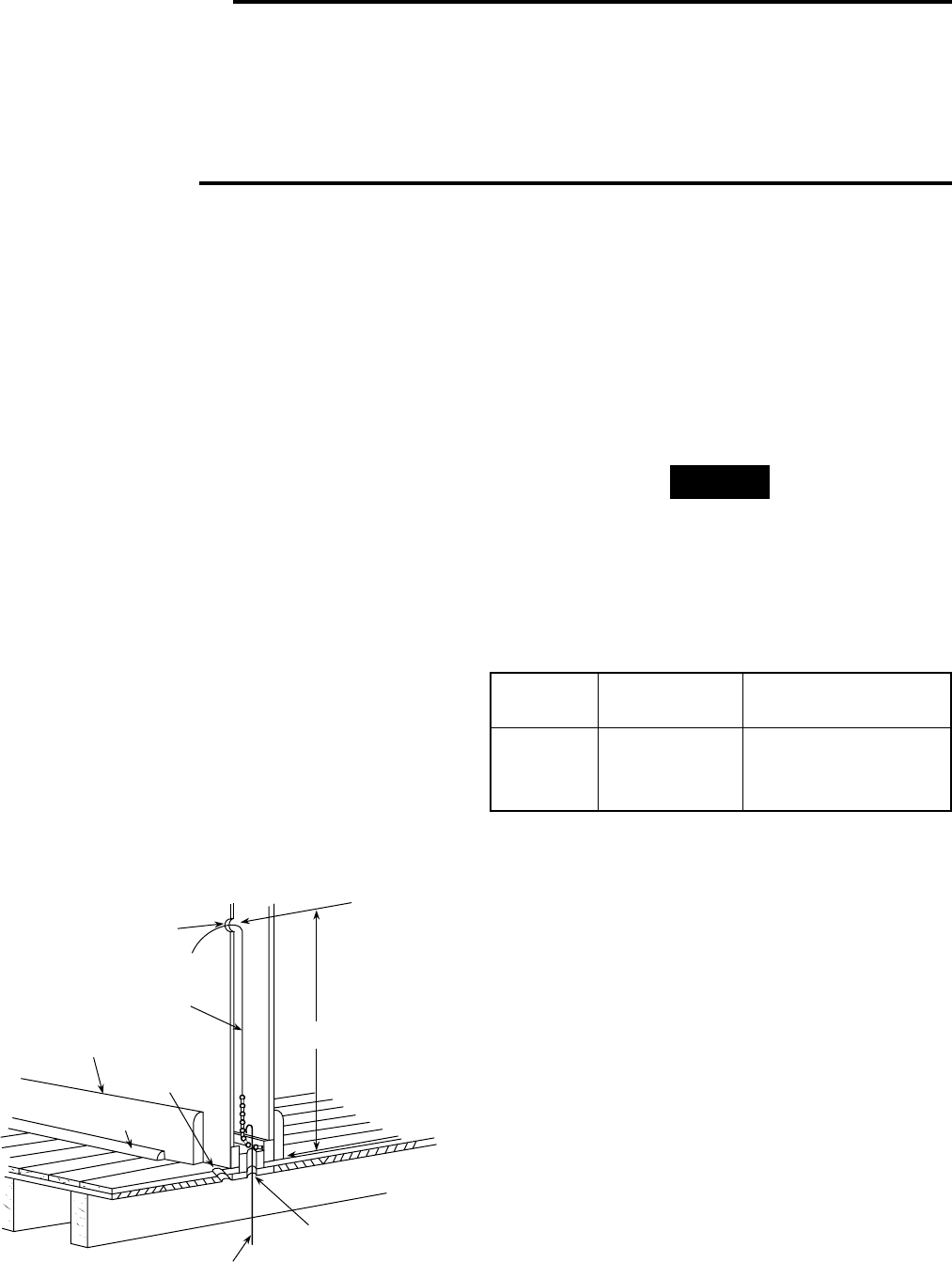
2
SPECIFICATIONS
THERMAL DATA:
Temperature Range: 10° to 32°C (50° to 90°F)
Differential: 1.7°C (3°F)
ROUTE WIRES TO LOCATION
1. If an old thermostat is being replaced and is in a
satisfactory location, and the wiring appears to be in
good condition, use existing wiring. If in doubt, rewire.
2. If a new location is chosen or if this is a new installation,
thermostat wire must first be run to the location se-
lected. All wiring must conform with local and national
electrical codes and ordinances.
Because of the small amount of power available on self-
generating systems, the gas valve may not operate if
there is too much resistance in the circuit. Therefore,
choose a location that does not require any more wire
than the recommended lengths shown in the Thermostat
Wire Length Table.
THERMOSTAT WIRE LENGTH TABLE
Solid Max. Length Max. Combined Length
Wire Sizes (2-wire cable) (2 single wires)
No. 18 30 ft. 60 ft.
No. 16 50 ft. 100 ft.
No. 14 80 ft. 160 ft.
3. Probe for obstructions in partition before drilling
1
⁄2”
hole in wall at selected location. Take up quarter round
and drill a small guide hole for sighting (see Fig. 1).
From basement, drill
3
⁄4” hole in partition floor next to
guide hole. In houses without basements, drill
1
⁄2” hole
through ceiling and into partition from above (see Fig.
1).
4. Through this hole drop a light chain, or 6” chain
attached to a strong cord. Snag cord in basement with
hooked wire. In houses without basements, drop cord
through hole in ceiling and down partitioning; snag
cord at the thermostat location.
5. Attach thermostat wire to cord and pull wire through
hole in wall so that 6” of wire protrudes.
ELECTRICAL DATA
Switch Rating: 250 to 750 millivolt DC 0.1 Amps
Switch Action: SPST - Sealed mercury switch
INSTALLATION
SELECT THERMOSTAT LOCATION
Proper location insures that the thermostat will provide a
comfortable home temperature. Observe the following
general rules when selecting a location:
1. Locate thermostat about 5 ft. above the floor.
2. Install thermostat on a partitioning wall, not on an
outside wall.
3. Never expose thermostat to direct light from lamps,
sun, fireplaces or any temperature radiating equip-
ment.
4. Avoid locations close to windows, adjoining outside
walls, or doors that lead outside.
5. Avoid locations close to air registers or in the direct
path of air from them.
6. Make sure there are no pipes or duct work in that part
of the wall chosen for the thermostat location.
7. Never locate thermostat in a room that is warmer or
cooler than the rest of the home, such as the kitchen.
8. Avoid locations with poor air circulation, such as be-
hind doors or in alcoves.
9. The living or dining room is normally a good location,
provided there is no cooking range or refrigerator on
opposite side of wall.
Figure 1. Routing Thermostat Wires
1/2" HOLE FOR
THERMOSTAT WIRE
STOUT CORD WITH 6"
CHAIN ATTACHED
BASEBOARD
STRIP MOLDING
1/4" GUIDE HOLE
FOR SIGHTING
APPROXIMATELY
5 FEET
QUARTER ROUND
REMOVED
3/4" HOLE IN FLOOR OF PARTITION
HOOKED WIRE FOR SNAGGING CHAIN
NOTE



